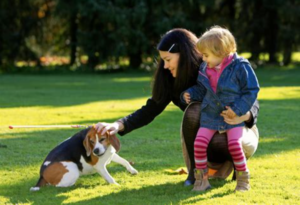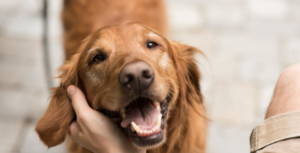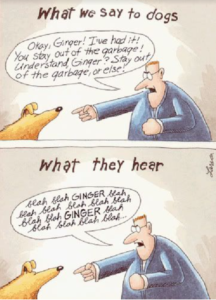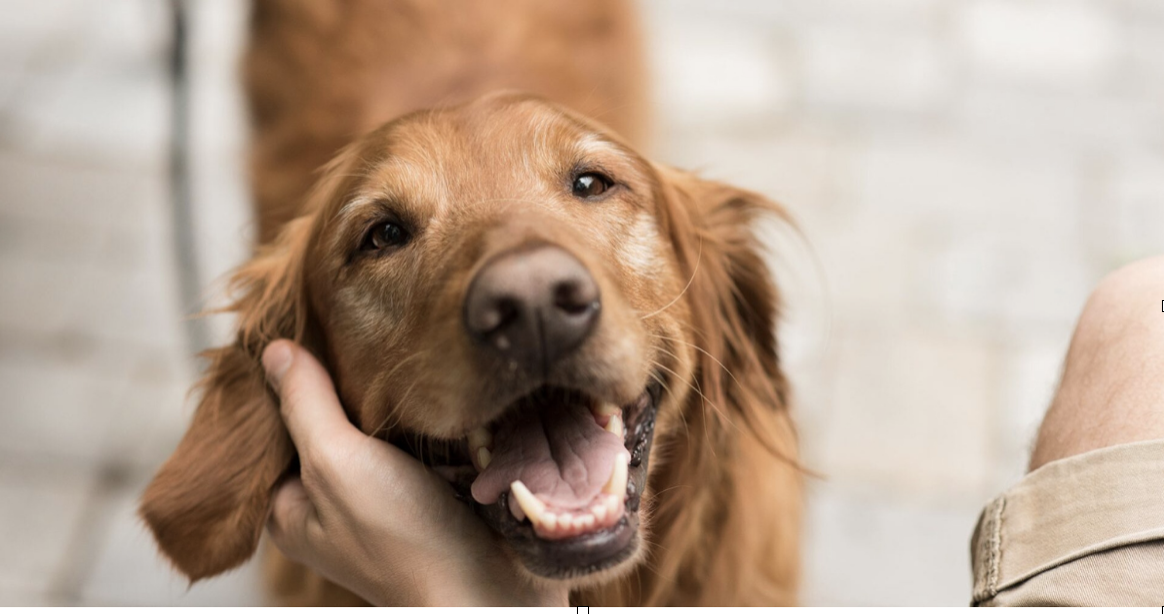by Suzanne Fuqua, CBCC-KA, CPDT-KA.
We love our pets, there’s no question about that. And love includes feelings of affection and attachment, care, closeness, and trust.
How can we show love to our pets beyond the basics of appropriate care? By understanding them and being patient when we don’t understand them. Canine emotion and cognition are being studied more and more and provide us with a peek into the secrets of how dogs think about the world and us. Then there are those mysterious felines that are beginning to be studied and are revealing more about what might be going on inside their heads.
We can do better at understanding our pets by observing their body language, learning to interpret it, and respecting what they’re trying to tell us. Giving a pet appropriate choice in their lives whenever possible is a good starting place.
If you pet your dog on her head and she moves away, what is she telling you? Maybe it’s uncomfortable to be petted on the head or it’s a little scary or she just doesn’t like it. Giving her the choice to move away, petting her on a different part of her body such as her chest or shoulder, or changing to a gentle stroke might be more comfortable for her. That’s understanding, respect and giving choice. It costs us little and is a signal to your dog that you have a mutual relationship. Any professional animal behaviorist will tell you.

Although at first glance this looks like a cute picture, look closer at the dog. She is turning away her eyes are almost closed and “squinched” and her mouth is closed. She’s not particularly happy or comfortable with being petted in this situation.

Now look at this dog. Eyes are slightly open and relaxed; mouth is open and relaxed and she’s leaning into the hand that’s gently petting the side of her face.
Dog message received, understood, and respected!
Cats are a bit more mysterious. They aren’t as different from their ancestors as dogs so they’re even harder to understand sometimes. And much less willing to forgive and forget so giving them choice is even more important.
Observing feline body language is a challenge, but if your cat is shifting or moving away, is silent (no purring), thumping, twitching, or switching his tail, swatting, or batting at you, these are all indicators he is not thrilled with your attentions. Respect that, stop what you’re doing, and you’ll be signaling that you understand him. Let him come to you and push his head into you. These are signals that he would like some of your attention. Watch for the signs and be respectful by changing your attention to a different activity like toy play.
And then there’s the main human communication method of talking and talking. Our pets, both dogs and cats, use body language and olfactory signals primarily along with some vocalizations. So, the old Gary Larson Far side cartoon clearly illustrates our verbalizing and often what our pets hear.

Using our body language to communicate with our pets lets them know we’re trying to understand them. Avoiding leaning over them, letting them leave when they’re uncomfortable, avoiding restraining them if they resist (unless absolutely necessary) are all ways to signal that their messages are received and understood. Remembering that dogs and cats are sentient beings and have feelings and preferences while focusing a bit less on what we feel or prefer can lead to an even better relationship with our pets.
We love our pets, there’s no question about that and we have the power to understand them better if we choose to do it.
About the Author
 As a CBCC-KA (certified canine behavior counselor), CPDT-KA (certified professional dog trainer) and Fear Free Certified Professional with 27 years of experience, Suzanne helps dogs and their people with difficult behavior problems. Assessing the issues, the environment, the needs of pet parents and designing a plan to improve dogs’ and peoples’ every day lives are the priorities.
As a CBCC-KA (certified canine behavior counselor), CPDT-KA (certified professional dog trainer) and Fear Free Certified Professional with 27 years of experience, Suzanne helps dogs and their people with difficult behavior problems. Assessing the issues, the environment, the needs of pet parents and designing a plan to improve dogs’ and peoples’ every day lives are the priorities.


